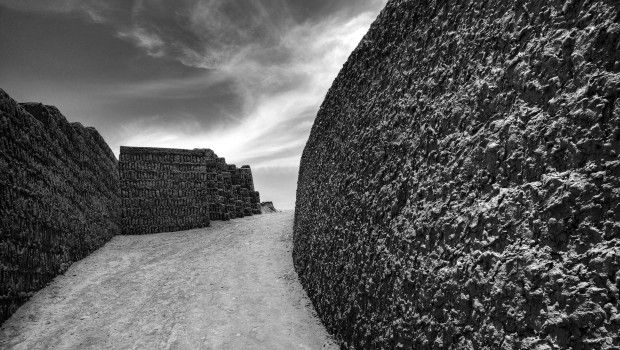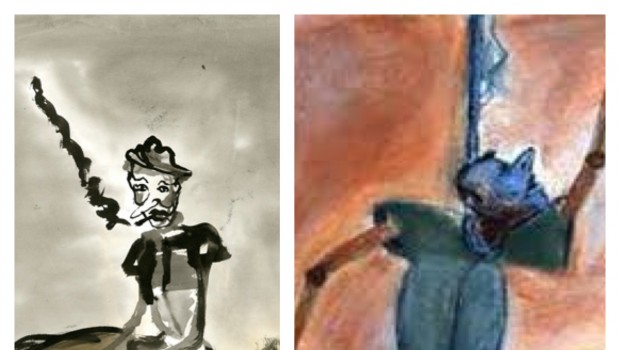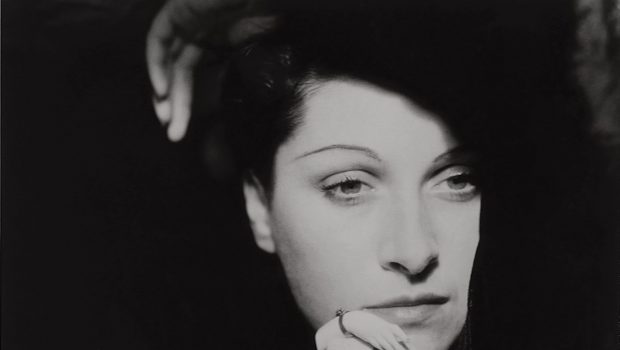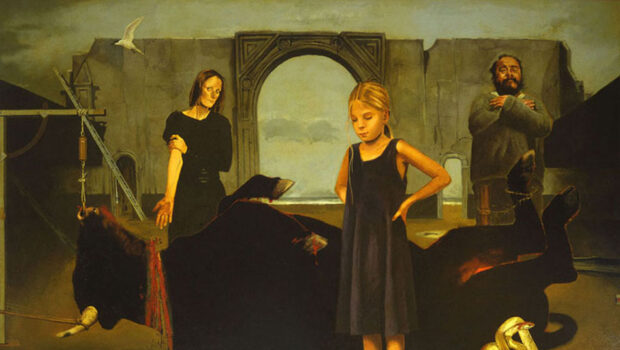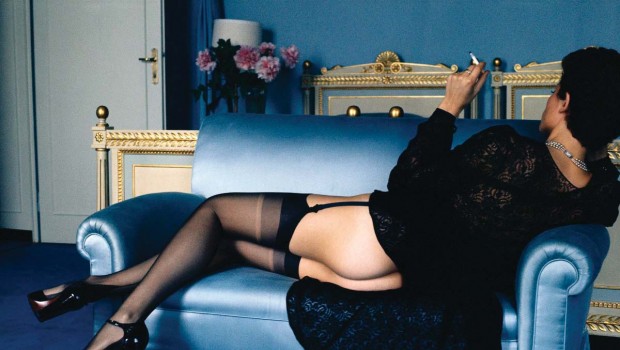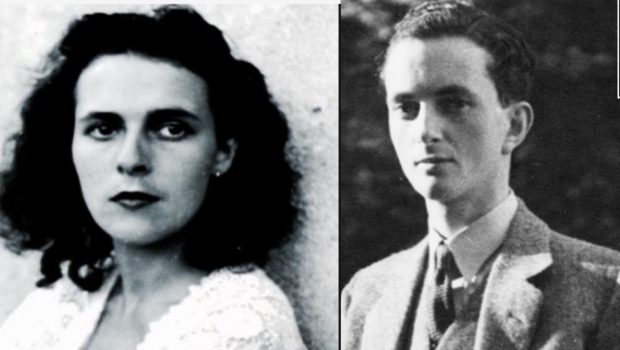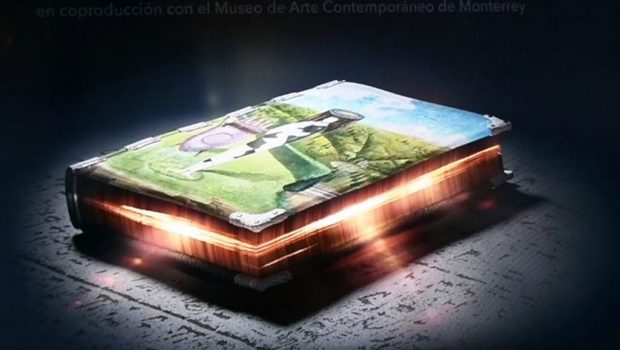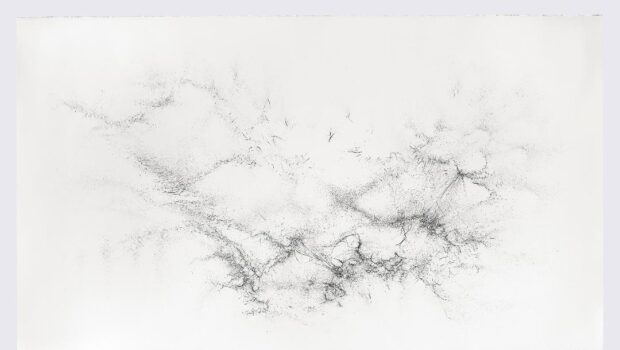The Silent Cities of Peru: The Archaeological Photography of Fernando La Rosa
Fernando Castro R.
When I began my journey in photography it was not very clear to me how the different genres, or what I later called “modes” of photography, all fit it in. Most confusing was the idea of documentary photography because prima facie it seemed that the medium could do nothing other than document. Later on I came to understand that not everybody photographs in order to document, and that to document photographically has an affinity with what some Enlightened explorers and surveyors did from the time of the Encyclopédie. The idea of documenting was not only to record, but to know what is recorded, and to document with a purpose.
In the seventies La Rosa became the scion of Peruvian photography at a time when the medium had been relegated for years to the vapidity of elegant portraiture, commercial advertising, and journalistic opportunity. La Rosa offered a vision of photography that made it akin to literature. First of all, it was an art form; and within that art form, as in literature, there were many approaches. Some approaches are closer to what was then called the “colloquial language tradition,” while in others the subject matter endured a poetic transformation that made it simultaneously more present, and less recognizable.
Slowly different words came into my lexicon that began to clarify the blooming, buzzing confusion of the medium. There was “straight photography,” a term that described an approach to the subject matter where there was to be no manipulation; e.g., no double-exposure, no photo-montage, no printing from two negatives, etc. The only allowed manipulation was the technique of the hard-core photographers called “the zone system.” In its defense, one could argue that it was not manipulation at all but a way to control the shortcomings of the photochemistry that, if left un-zoned, would not be able to deliver a scene with details in the shadows and the highlights, the way human vision swiftly accommodates for. However, it also allows for spectacularly illuminated objects that are rendered with poetic prowess. La Rosa is a master of that technique and one of the great exponents of an aesthetic that runs parallel to it. It is with that craft that he began to re-present to us a familiar world with such freshness that made us feel guilty for not having seen its beauty before. Even ordinary objects like a wall or a chair were transfigured in such a way that could have pleased T.S. Eliot and Octavio Paz simultaneously.
Four of La Rosa’s images in this exhibit deserve special mention. One is El Lanzón (1972) at Chavín de Huantar —a 3,500 year old site (3,000 years before the Inca Empire), where in an underground crypt stands one of the most iconic pieces of pre-Columbian sculpture. The 4.5 meter-high granite Lanzón shows a carved image of a deity half-human half-feline, with snakes as hair, that smiles tauntingly. If you add to its contemplation the religious beliefs of those who sculpted it, it must have had a terrifying effect on those who were forced to confront it. An additional piece of relevant information is that Chavín de Huantar was also an oracle. In order to photograph El Lanzón La Rosa waited until noon when the light entered the chamber through a vertical tunnel. Only then the idea of the axis mundi that probably drove its conception can be made evident: the darkness of the finite earth terrifies, but the vertical ascent to the heavens by means of spoken prophecy liberates us (them) from uncertainty.
In the Inca citadel of Machu Picchu there is an unusual piece of carved stone that sticks out of the ground and is identified as a condor. However, most of the time the viewer can walk around it and see nothing ornithological about it. It is the kind of pre-Columbian “abstract” shape that inspired artists like Jackson Pollock and Joaquín Torres García. La Rosa’s photographic rendering (2000) of that carved stone in the light and shadows of the correct time of the day reveals the condor in the sculpture; and also how the original artists used the earth as a sky across which the great bird soars. 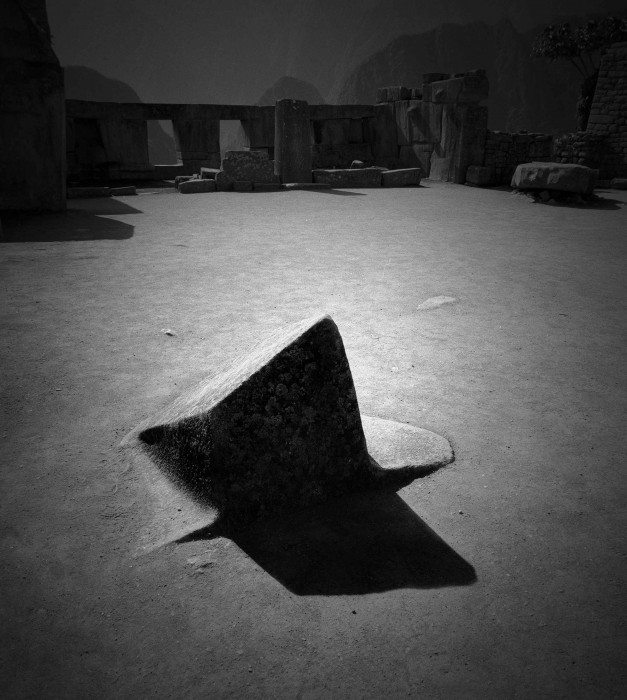
Thirdly, there is Kenko, one of the most awe-inspiring Inca sites. It is a natural rock formation that was used architecturally to mark a gate to the underworld (The Hades of the ancient Greeks). La Rosa dedicates several images to it. One of them is titled Kenko, Temple Interior (1999). It is a diagonal composition where the illuminated manmade geometry pinned against the natural amorphousness of the cave’s rock. La Rosa’s image crystallizes the Inca Weltanschauung centered in the sun whose architecture establishes a symbiosis with the earth and with the ancient cults of mountains and stones.
The hitherto most silent city of Peru has been Caral, hidden in plain sight on the coastal desert of the Supe valley, it has kept its silence for over 4,600 years. It was re-discovered by Peruvian archaeologist Ruth Shady who zealously controls access to the enormous citadel. The challenge for La Rosa was not only to abide by the strict access regulations but to photograph a structure with the brightness of sand in the unmerciful desert sun. His work Caral, Central Pyramid (2012) shows a circular open space whose function is yet to be determined, and one of the many pyramids in the citadel. Caral, currently believed to be the most ancient city in the Americas, defies the hypothesis that cities around the world were established as a result of warfare, because no weapons, nor mutilated bodies have been found there. Instead, the evidence suggests it was built for commerce and pleasure. Indeed, 32 flutes made of condor and pelican bones and 37 cornets of deer and llama bones have been uncovered so far, suggesting that friendly trade deals may have been celebrated with musical carousal. It was a style of living that may have been suddenly ended by still unknown forces.
La Rosa’s current exhibit The Silent Cities of Peru: Archeological Photography satisfies two modes of photography and therein resides the enigmatic power of the works. In the documentary mode there is an exact depiction of the ancient Pre-Columbian buildings in Peru. On the other hand, there is a more poetic mode that recreates the aesthetic experience (as elusive as that phrase may be) that inspired poets like Martín Adán and Pablo Neruda, and other artistically-minded photographers Linda Connor, Javier Silva and Edward Ranney. Like La Rosa’s, the artistry of these photographers becomes even more evident in a time of instant photographic gratification: where we save or delete an image two seconds after we shoot it. They, on the other hand, had to have the deftness to capture, and the imagination to visually anticipate what was going to turn out. The Silent Cities of Peru covers civilizations across a 4,500 year period, and a time span of La Rosa’s works of over forty-years. The next venue for this exhibit will be the Georgia Art Museum (Jan 18th – March 20th, 2014).
Posted: March 9, 2014 at 2:36 am


